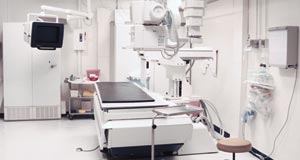|
Equipment maintenance insurance Zurich product increases agent revenue while saving money for clients By Phil Zinkewicz
Insurers’ appetites for particular lines of business change from time to time, and producers are often hard put to maintain desirable bottom-line results when insurers go on a diet. Therefore, producers are constantly on the watch for ways to generate new revenues. Zurich has a product that will allow producers to capitalize further on clients they already have. Independent insurance agents and brokers who provide commercial insurance coverages for organizations and governmental entities that rely upon electronic equipment, such as copiers, fax machines, computers, audiovisual equipment, telephones and security systems, may be able to generate an additional source of income by offering their clients equipment maintenance insurance (EMI). EMI consolidates all of an insured’s office equipment service contracts into a single insurance contract. In addition to simplifying the administration of service contracts, producers can save money for their insureds, according to Jim Norman, vice president of EMI at Zurich. The concept of equipment maintenance insurance is a simple one. When a business owner buys office equipment or a hospital buys medical equipment, that purchaser is most often protected if the equipment breaks down during a warranty period, usually 90 days or more. However, if that buyer wants added protection, he or she would have to buy an “extended warranty” contract or an equipment maintenance agreement. For an organization with multiple pieces of equipment, that means having to deal with multiple contracts and vendors. The alternative is for the equipment buyer to purchase equipment maintenance insurance (EMI). Depending on the contract wording, the insurance covers the cost of repairs to an insured’s equipment and, in some cases, pays for rental of a replacement unit, for a period of time, should the damaged equipment need to be sent out for servicing. The benefits to the insured? Norman explains that the insured can use one EMI policy to cover all of the organization’s eligible equipment. As the basic warranty on each piece of equipment expires, the insured can roll coverage for that item into the EMI insurance coverage. Usual maintenance contracts with vendors apply only to a single piece of equipment that must be tracked individually. Says Norman: “Zurich reviews an insured’s equipment, does a risk analysis and then sets a premium that usually is more favorable to the insured than other protection.” Norman maintains that offering equipment maintenance insurance is an opportunity for agents and brokers to draw additional revenues from existing clients while helping those clients save money. “If an agent has an existing insured, say a hospital, it makes sense for that agent to go that extra mile and offer EMI,” he says. “The coverage addresses a broad range of industries looking for affordable alternatives to traditional equipment maintenance agreements. We underwrite each account individually, based on such parameters as equipment type, age, preventive service and service logs.” Norman says that with an EMI policy, equipment owners may be able to contain costs significantly. “Consider a hospital. A hospital might have as many as 400 pieces of equipment—general office equipment, x-rays, CT scanners, MRIs—that can generate as many as 2,000 maintenance invoices each month. By placing those pieces of equipment under one contract, the hospital not only can save a good deal of money, but also exercise more control over how their equipment is maintained.” In some cases, equipment maintenance insurance can provide broader benefits than most maintenance agreements with the original vendors, says Norman. For example, EMI may reimburse for losses associated with power surges, human error or negligence, in-house repairs, preventive maintenance inspections and consequential damages caused by the environment. In addition, Norman says that Zurich’s online tracking system can help insureds better manage their assets. The online system affords the client access to scheduling, claim information, reports and more. Incident reports can help provide data for future purchasing decisions. “Although EMI is a fairly simple concept, it does take time to implement,” Norman notes. “There is the gathering of all equipment maintenance contracts. For many producers, EMI is an unknown product. They don’t know where to begin. The message we want to get across to producers is that we’re here to help them — help them create a new source of revenues and to save their clients money.” Norman says that Zurich’s game plan is to educate producers as to the viability of equipment maintenance insurance and assist them in the sales and handling processes. “There is no question that we are in this market for the long term.” * |
||||||
| ||||||




